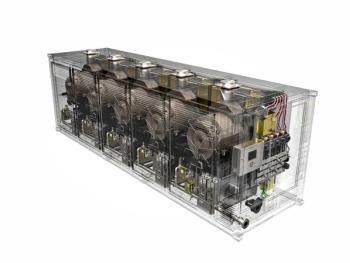
Supercritical CO2: A step ahead in power conversion
Supercritical CO2 (S-CO2) Brayton Cycle is the most promising of the power conversion cycles currently under development. Similar in configuration to an ideal gas closed-loop Brayton system, it can suit both bulk thermal and the latest generation of nuclear reactors. The simplest recuperated closed system consists of a heat source, heat exchanger, turbine and generator, a recuperating heat exchanger, a waste heat removal heat exchanger and a compressor.
Numerous studies have been conducted over the last decade on S-CO2 cycle optimization for different applications and for overcoming the challenges in using supercritical CO2 as a working fluid. The biggest advantage of S-CO2 is higher cycle efficiency compared with a Helium Brayton system. This is the result of lower compressor work due to the fact that cold end of the loop operates at temperatures and pressures near the critical point of CO2, which leads to a rapid increase in density and specific heat.
Another feature is the compact size of the turbomachinery which is the result of the high density of the CO2 working fluid. Compressors and turbines with fewer stages may allow lower component cost and a smaller energy conversion system footprint in comparison to steam or ideal gas Brayton systems.
The S-CO2 Brayton Cycle also eliminates the need to deal with sodium-water reactions in the licensing and safety evaluation which makes them more attractive than superheated and supercritical steam cycles. And the temperature profile in the supercritical region can provide a better match to the heat source temperature glide, avoiding so-called “pinching.” In comparison to the Organic Rankine Cycle (ORC) for low-grade heat recovery, the advantages of S-CO2 cycle are stability, environmental impact and cost.
The ideal gas law cannot be applied to the S-CO2 cycle because gas expansion and compression are not ideal. High pressures and high temperatures may also create challenges in component design. A high power density of S-CO2 requires that turbomachinery components be designed to deal with heavy torque. Further, advanced sealing systems need to be considered for rotating components.
To increase cycle efficiency when operating below the critical point, CO2 has to be cooled to around 20°C, which may pose a challenge for cooling system design. Corrosion should also be taken into account for temperatures higher than 500°C.
Special measures should be considered, such as fabrication of components from high-cost alloys or use of protective coating.
Nuclear application
A simple Brayton Cycle scheme for a sodium-cooled fast reactor was analyzed for a 100 MW net electrical output. The core temperature was higher than 500°C, but because of temperature losses in the intermediate contour, the heat exchanger outlet temperature was set as 480°C. The overall scheme parameters are:
Electrical power production 100 MW
Thermal efficiency 31.54 percent
Temperature at turbine inlet 480°C
More in January/February 2013 issue of Turbomachinery International
Newsletter
Power your knowledge with the latest in turbine technology, engineering advances, and energy solutions—subscribe to Turbomachinery International today.




